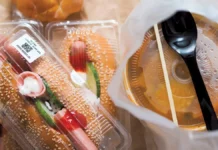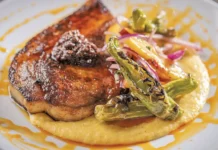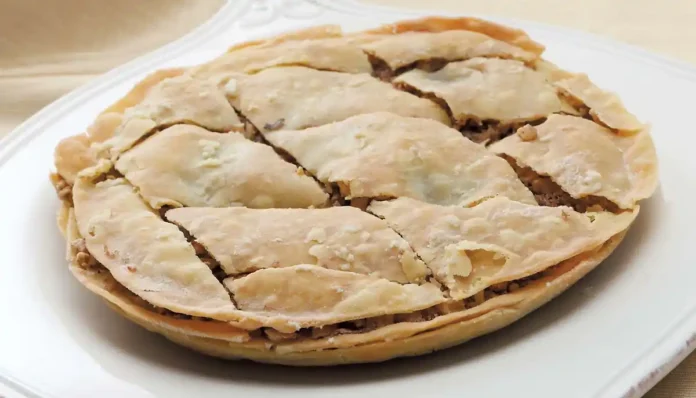
Happy New Year! Can you believe it’s already 2023?! Time for a fresh start and new year’s resolutions – eat healthier, cook more, and spend more time with your loved ones… well, few dishes can accomplish that more than an incredible, edible Greek pie! And, since it’s the new year, we the Greeks have a traditional pie to start the year off on the right foot – Vasilopita!
The King of Pies
Vasilopita translates to ‘King’s cake’ or ‘King’s pie’, as the word ‘pita’ can mean either a cake or a pie. Not pie in the American sense, which is usually associated with desserts (think apple pie, pecan pie, cherry pie, etc.), but rather pie in the more Mediterranean sense, as in filling (whether savory or sweet) encrusted in a type of pastry – in the case of Greek cuisine, a phyllo dough (either store-bought or homemade).
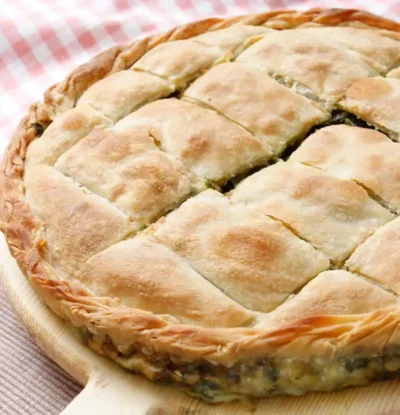
Vasilopita can be savory or sweet, depending on the region, town, or city it originates. It’s more common to find sweet Vasilopites, traditionally made with some combination of flour, eggs, milk, and sugar – sometimes with additional accoutrements mixed in like raisins, nuts, dried fruit, or herbs. The top of the cake is often decorated simply with a heavy dusting of confectioner’s sugar and the new year written atop. The key here is that there is a coin, wrapped in foil, that’s hidden in the cake.
Traditionally, the Vasilopita is sliced at the stroke of midnight with friends and family, as one year turns to the next. When cutting the Vasilopita, everyone hopes to find the coin hidden in their piece, as it is considered to be a sign of good luck and a good omen for a wonderful year ahead – the ultimate fresh start, imbued with positivity.
Beyond Vasilopita, there’s a saying we have in Greek, “Kota Pita to Genari kai Papi to Alonari,” which translates to “Chicken and Pie in January, and Duck in July.” This may sound a bit silly, but the idea behind it is sound: in January, a cold month, it is important to consume pies and chicken to keep up your strength and vitality, while in July, the more decadent bird can be consumed, as you’re much more active.
We, the Greeks, have taken this message to heart, and have a longstanding tradition of baking various pites—pies with all different kinds of fillings…including chicken!
Pi(e) – it’s not just a Greek letter or magical number
Pies have always had a stronghold in traditional Greek cuisine, with variations in shape, size, dough, and filling depending on their area or region of origin.
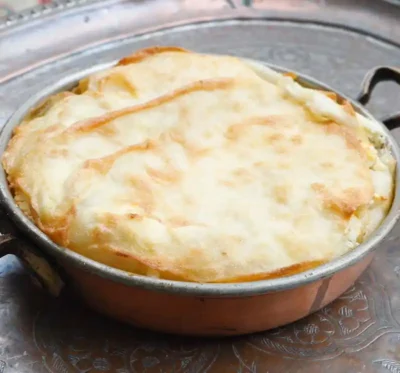
The word for pie in Greek is ‘pita’, which comes from the ancient verb ‘pittakono,’ meaning to make something flat. From the word the word pita comes the word ‘pida’ in Turkish (meaning pizza), the words pizza and pasta in Italian, pâte (dough and pasta) in French, and pastry in English (refering to pies, tarts, and doughs).
Now that we’ve established the etymology of the word, let’s talk about the dish itself, which has deep roots in the ancient civilization of the Mediterranean. Back in the Neolithic era, when farmers began to cultivate wheat, they learned to grind it, and at some point, decided to mix it with water to form a dough. Later, they discovered they could bake this dough on hot stones, and so was born the ancestor of the Greek pie…
The ancient Greeks continued to develop this method, and called their original pies ‘plakous’, meaning ‘wide pie.’ Over time, the word ‘plakous’ came to denote a thicker preparation similar to the cakes of today, while the word ‘pita’ was used to denote a thin, flat bread. Subsequently, the pies were filled with vegetables from the orchards and gardens, as well as cheese, milk, meat, seafood, even grains. This is the origin story for how the traditional Greek pie was created, which continues to live on to this day.
My Pie, Your Pie, His Pie, Her Pie – Pies for Everyone!
Regionality is a huge part of what makes the pies from across Greece so distinct – the availability and prevalence of different ingredients heavily influences not only the fillings of the pies, but their shapes and sizes as well.
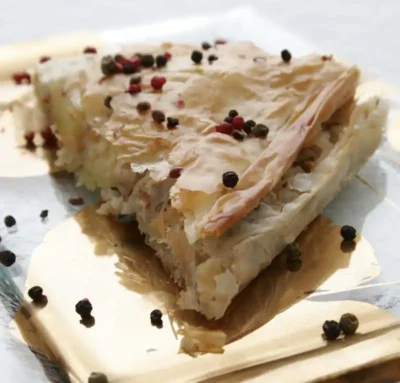
In Epirus, the influence of a nomadic life combined with the harsher conditions of mountain living result in a style of cuisine made for people ‘on the go.’ Given that pies have the potential to be highly nutritious and easily portable, this is a perfect style of dish for them. This region in particular has an inordinate number of pies, too many to list, in spite of the fact that all it takes is 3-4 ingredients to make wonderful pies, like wild greens and cheese, or meat and fish. The phyllo for the crust in Epirus is always very thin, which allows the pies to be baked anywhere.
In Roumeli, cheese pies made with milk called ‘Tyropites’ are the most common – but also among the most difficult, as the phyllo they use has to be paper thin. Here they are also known for their milk pie, ‘Galatopita,’ made with milk and eggs, and drizzled with honey, and a unique pie made without wheat as the crust. Instead, they combine cornmeal and water to create a paste as the base for the pie, which they fill with squash, cheese, or cabbage, before encasing in a second layer of cornmeal before baking.
As we travel to Thessaly, we see commonality with Epiros as fellow nomadic shepherds, leading to a diet that relied heavily on portable meals. As this region is known for its dairy production, cheeses are key ingredients in many of their pies, made with a very thin phyllo known as ‘vergas’.
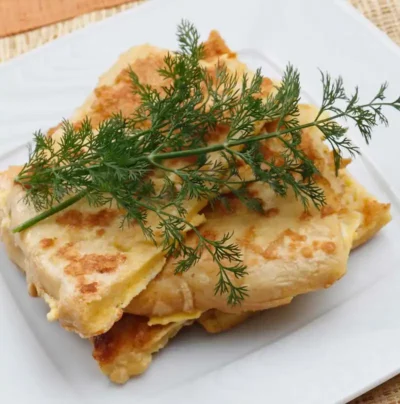
In Macedonia, they have a plethora of pies they are known for, but what makes them particularly unique is their unbelievably paper-thin phyllo.
In Lefkada in the Ionian region, they are known for ‘Maridopita,’ a pie full of tiny fish known as Marida (picarel in English), which are in season in September when the festival occurs. They are also known for Avgopita, or egg pie, which is a cheese pie with a lot of eggs, often prepared to usher in the Lenten period before Easter.
While, Kefalonia, also in the Ioanian, is famous for its ‘Kreatopita’ (meat pie – photo shown at top) and ‘Cremidopita’ (onion pie).
In Evros, they get very creative as they have a rich and vast assortment of ingredients available to them – here they make pies with cabbage, nettles, radishes, assorted herbs, often mixed with semolina, and shaped into all different styles of pies.
In the Cyclades, the predominant method of preparation for pies is to cook them on the stovetop in a small pan. Mykonos is famous for a Cremidopita made with onion, dill, tyrovolia, a type of fresh cheese known as myzithra, and bits of lard. On the other hand, the island of Folegandros makes Kalasouna, a strained cheese pie made with onions, wrapped in phyllo.
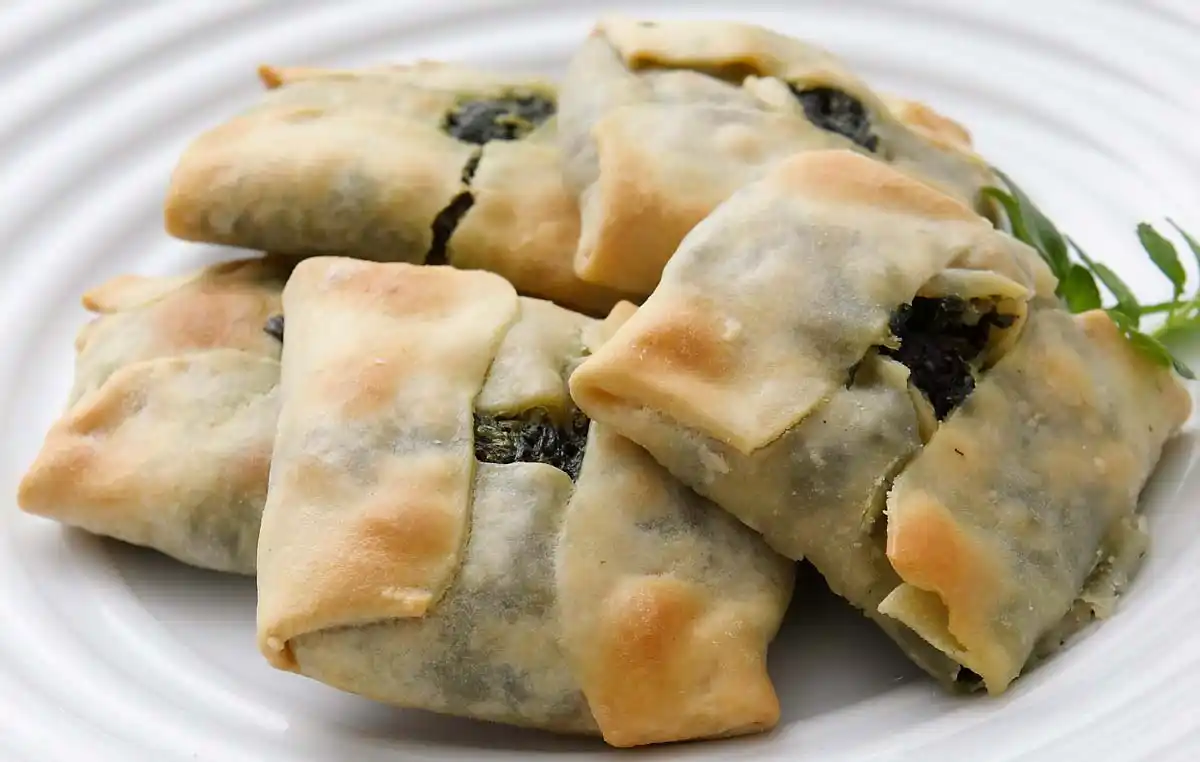
Crete is a special island, known especially for the innumerable small, handheld pies filled with all kinds of ingredients! Kalitsounia is a signature dish of Crete, made with myzithra or anthotyro (both soft, fresh milk cheeses similar to Italian ricotta), eggs, and flour – sometimes sweet, sometimes savory – and can be found in different shapes and styles all over the island. Besides the many varieties of pie that can be found across Crete, nowhere else in Greece are there more kinds of fried pies – this stems from the olden days, when it was harder to find wood for the wood-burning ovens, and easier to cook on the stovetops in pans as a practical measure.
Of course, Greece is a big country, and there are many more specialties from different areas, regions, cities, and towns – this is just a small handful of the different kinds of pies that are made across Greece – but the point remains, there’s a pie for every person!
Pie in the Sky
As a child, my yiayia (grandmother in Greek) made a special ‘Gigantopita’ with the leftover Gigantes – Giant Beans from dinner the night before. What I loved so much about this pie was that it had all of the best elements of her incredible giant beans – creamy, rich yet light, perfectly tomato-y with herbs and vegetables all mixed together – but with the amazing crispy, crunchy, delightful texture of her homemade phyllo. Her phyllo was a hybrid – it was not as thin as the sheets people have come to know, and not as thick as the traditional horiatiko phyllo; it was something in between, so she would encase the giant beans in multiple layers that made an almost a puff-pastry-like crust – but with olive oil, of course.
On the other hand, while my mother didn’t cook very much, she had a few specialties – homemade yogurt being one of them, and Prasopita – Leek Pie being another. This simple pie is something I still dream about today! She would saute the leeks until they were soft and creamy, lightly caramelized, and add a special blend of herbs she picked from our garden – it was always a different mix, depending on what was available, but always delicious. She would emulate my yiayia’s phyllo dough, which didn’t have quite the same finesse as Yiayia’s, but the crispy, crunch exterior was what we all wanted to balance out the soft, savory filling of the leeks.
However, because her crust wasn’t quite as delicate as Yiayia’s, my mother would cover the baked pie with a kitchen towel to allow the steam to soften it up a bit. This was important, because my siblings and I would all sneak in to the kitchen separately, thinking no one would notice if we secretly ripped off a piece of the outer crust to snack on before we had dinner…the thing is, when all five of us (my siblings and I) would do this separately, the big reveal at dinner actually showed that we had all accidentally eaten the entire crust, and there were no edges to the pie left! When this happened, while my yiayia would get mad, my mother actually loved it, because it meant that we loved her pie!
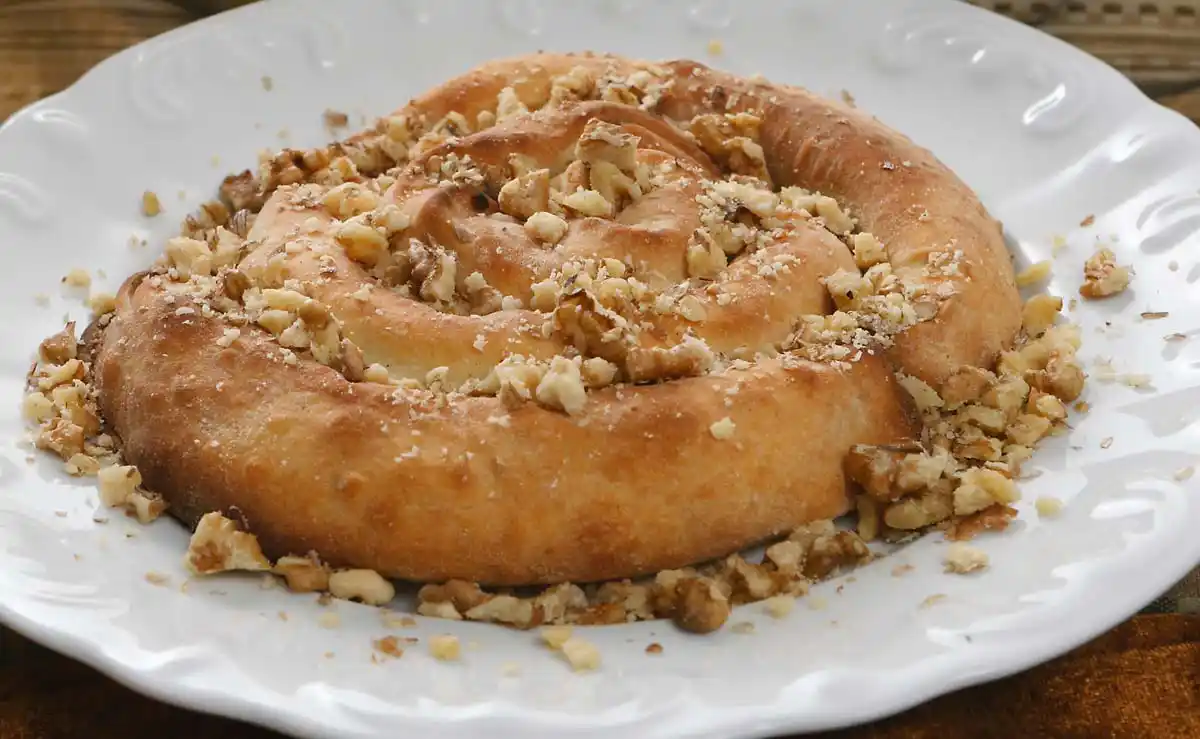
Would you like some Pie?
What I love about Greek pies is the culinary versatility – as culinarians, we all know that we can create something that tastes divine, but looks a mess. The magic of the Greek pie is that the aesthetic of the filling doesn’t matter, because we are able to encase it in all different shapes and styles of pie. Some are large, family style formats on sheet trays and in baking pans, to be cut and served; some are individually made in the form of triangles, spirals, or folded squares; and some are bite sized, perfect for hors d’oeuvres, like little pouches, rolls, or triangles. Really, as long as you can encase the filling in the phyllo, the possibilities are endless! And, that means the flavor combinations are endless as well!
Pies are an excellent way to reduce food waste and repurpose leftovers, or dishes that didn’t turn out quite to plan. They are a great way to experiment with textures and cooking methods for the fillings. And, they are an amazing way to feed a crowd without a tremendous amount of tedious effort.
In terms of the phyllo you use, while it’s true you can take the time and effort to make your own phyllo, there’s ready-made phyllo available in stores and for purchase through your local food purveyor. So, all you need to do is make your filling and get baking! Or, if you’re really pressed for time, there are frozen pies available in stores that only need to be baked… just make sure they’re made with olive oil!
New Year, New Pie
So, embrace the spirit of the new year, and try something new – make a pie, and make it Greek style!


















